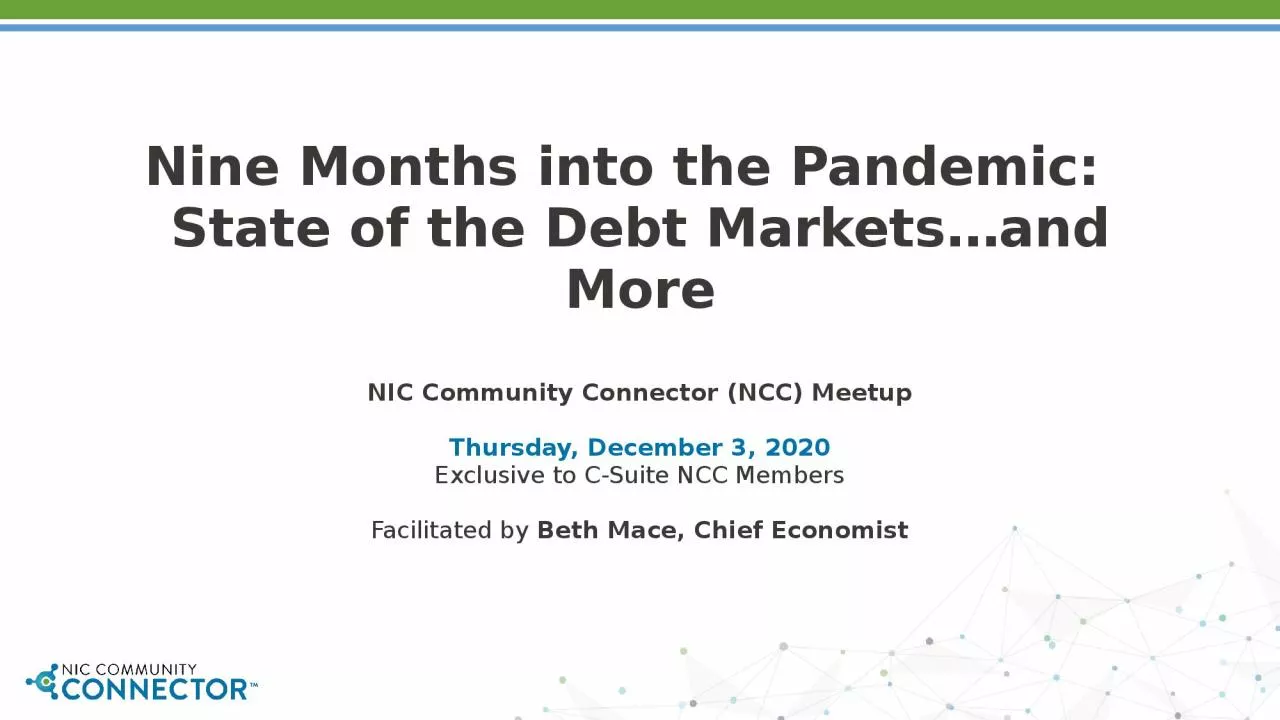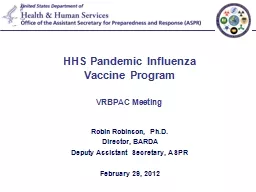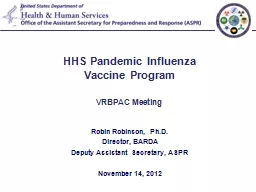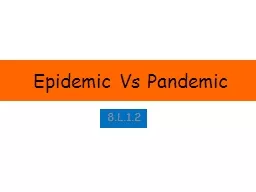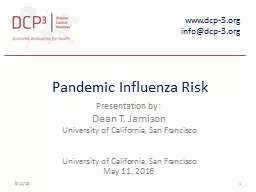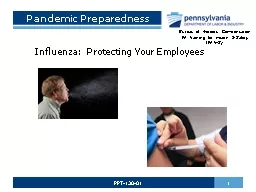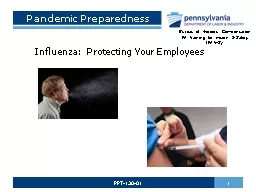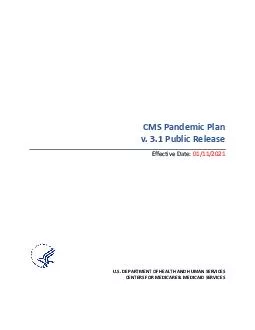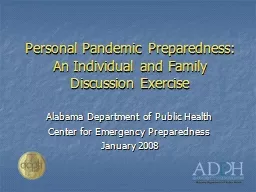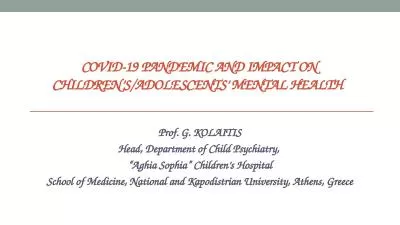PPT-Nine Months into the Pandemic:
Author : anderson | Published Date : 2023-11-07
State of the Debt Marketsand More NIC Community Connector NCC Meetup Thursday December 3 2020 Exclusive to CSuite NCC Members Facilitated by Beth Mace Chief Economist
Presentation Embed Code
Download Presentation
Download Presentation The PPT/PDF document "Nine Months into the Pandemic:" is the property of its rightful owner. Permission is granted to download and print the materials on this website for personal, non-commercial use only, and to display it on your personal computer provided you do not modify the materials and that you retain all copyright notices contained in the materials. By downloading content from our website, you accept the terms of this agreement.
Nine Months into the Pandemic:: Transcript
Download Rules Of Document
"Nine Months into the Pandemic:"The content belongs to its owner. You may download and print it for personal use, without modification, and keep all copyright notices. By downloading, you agree to these terms.
Related Documents

